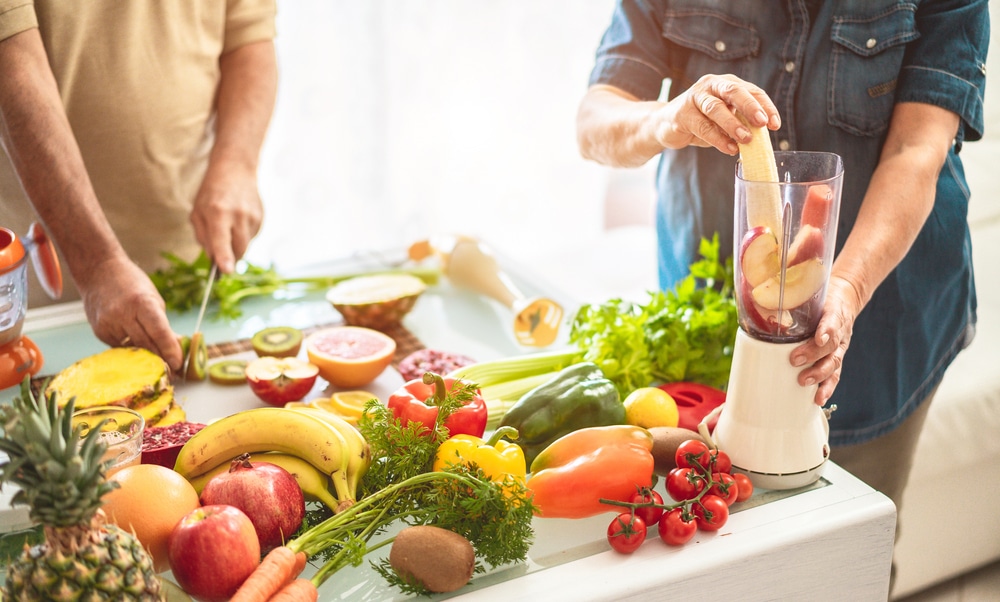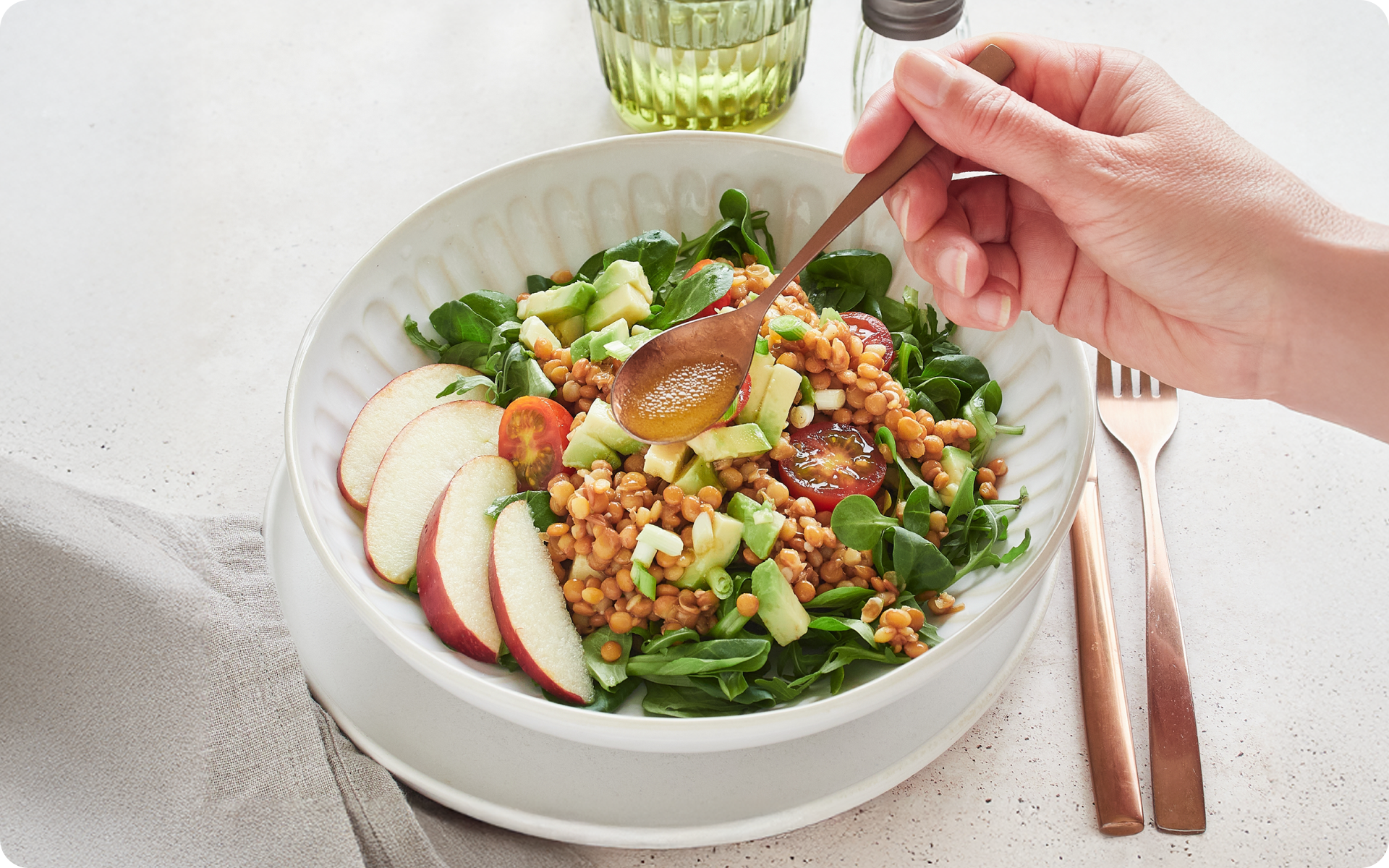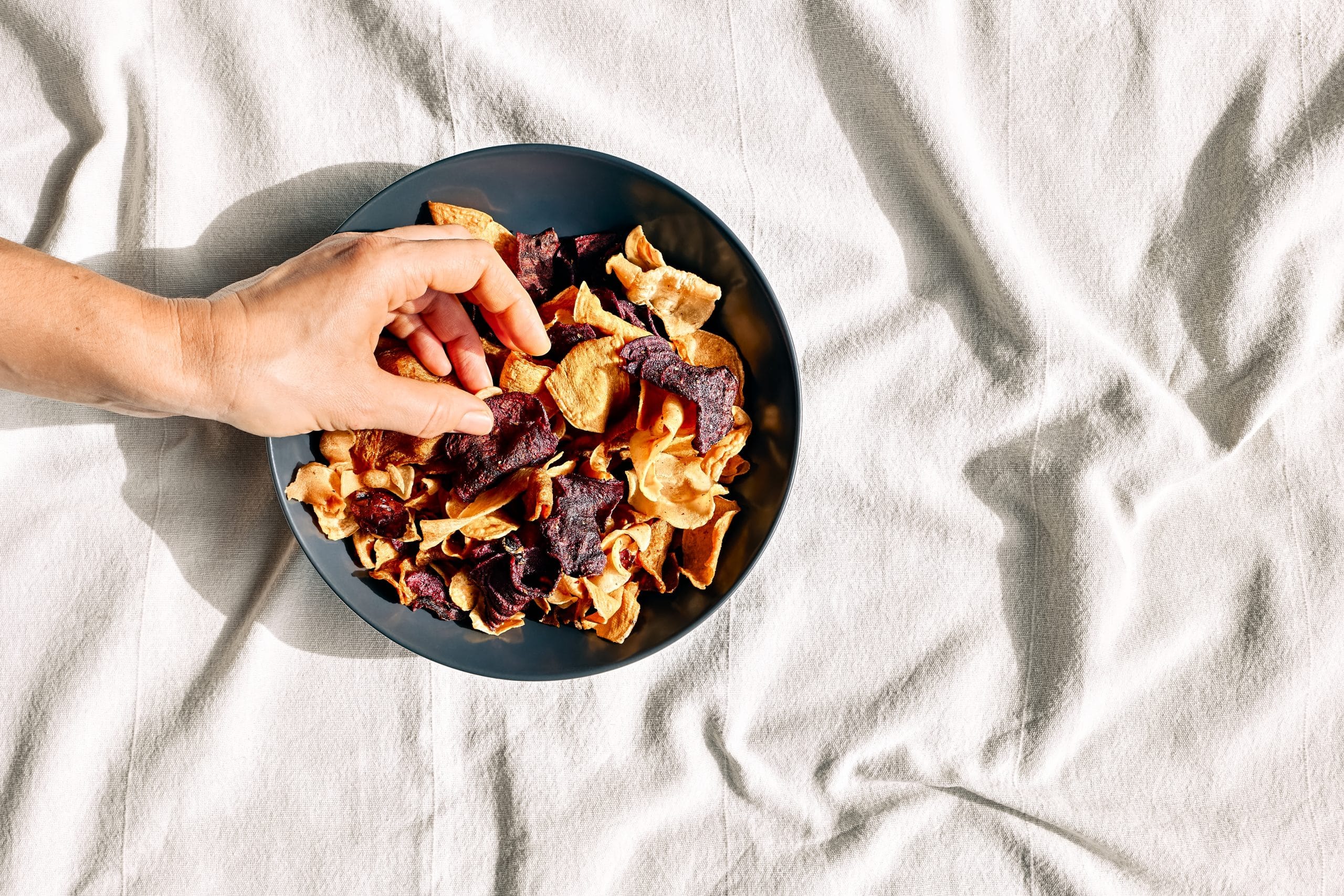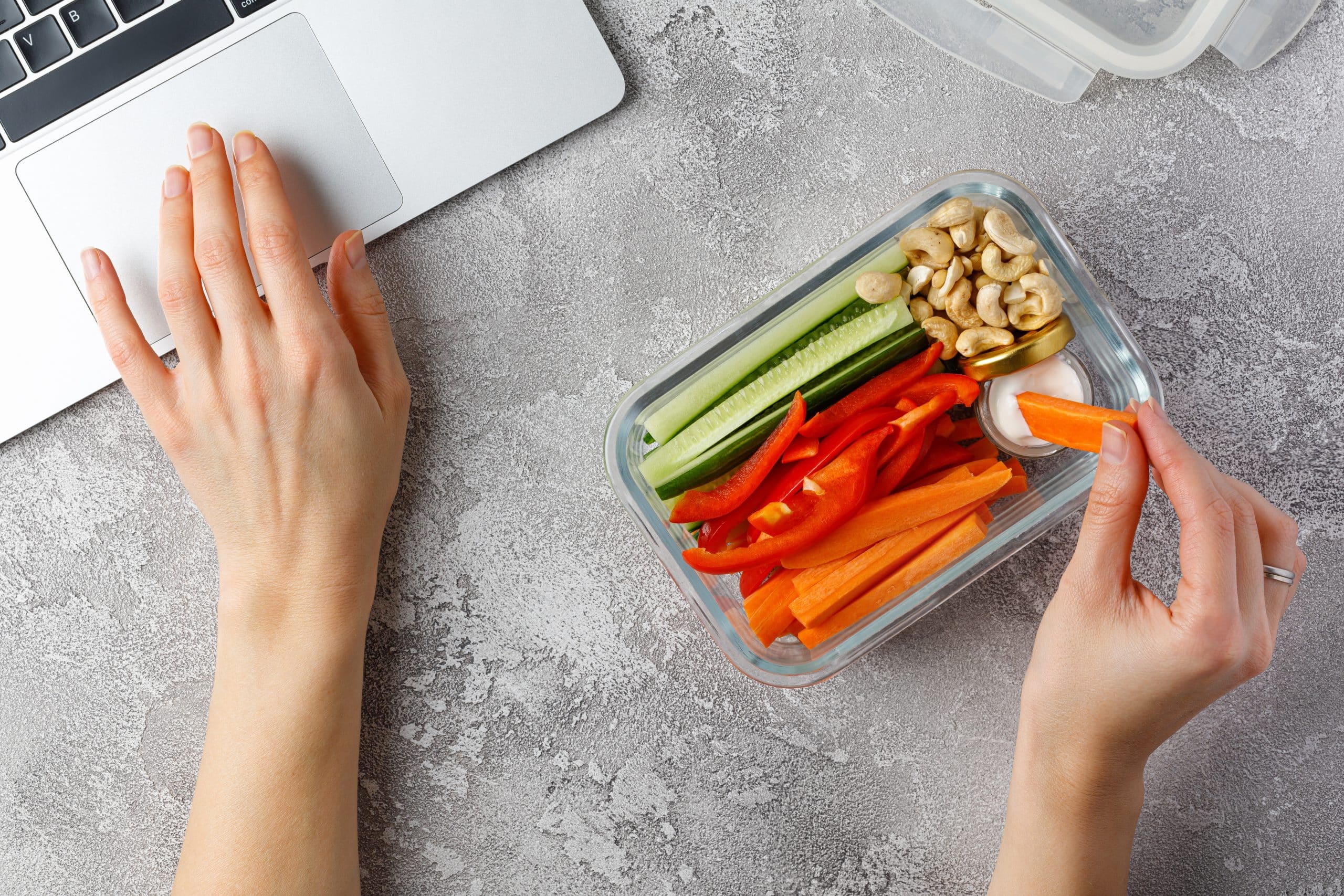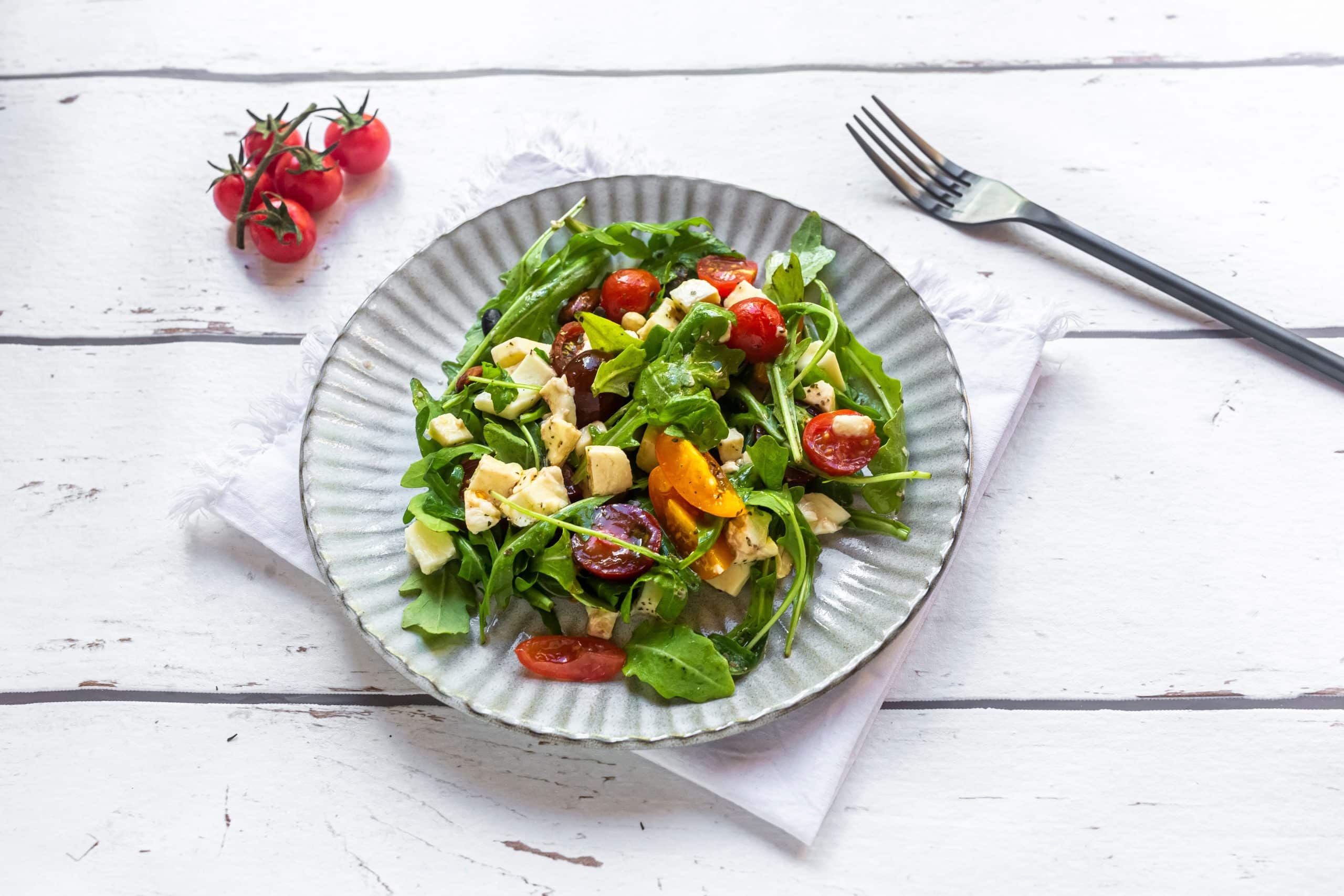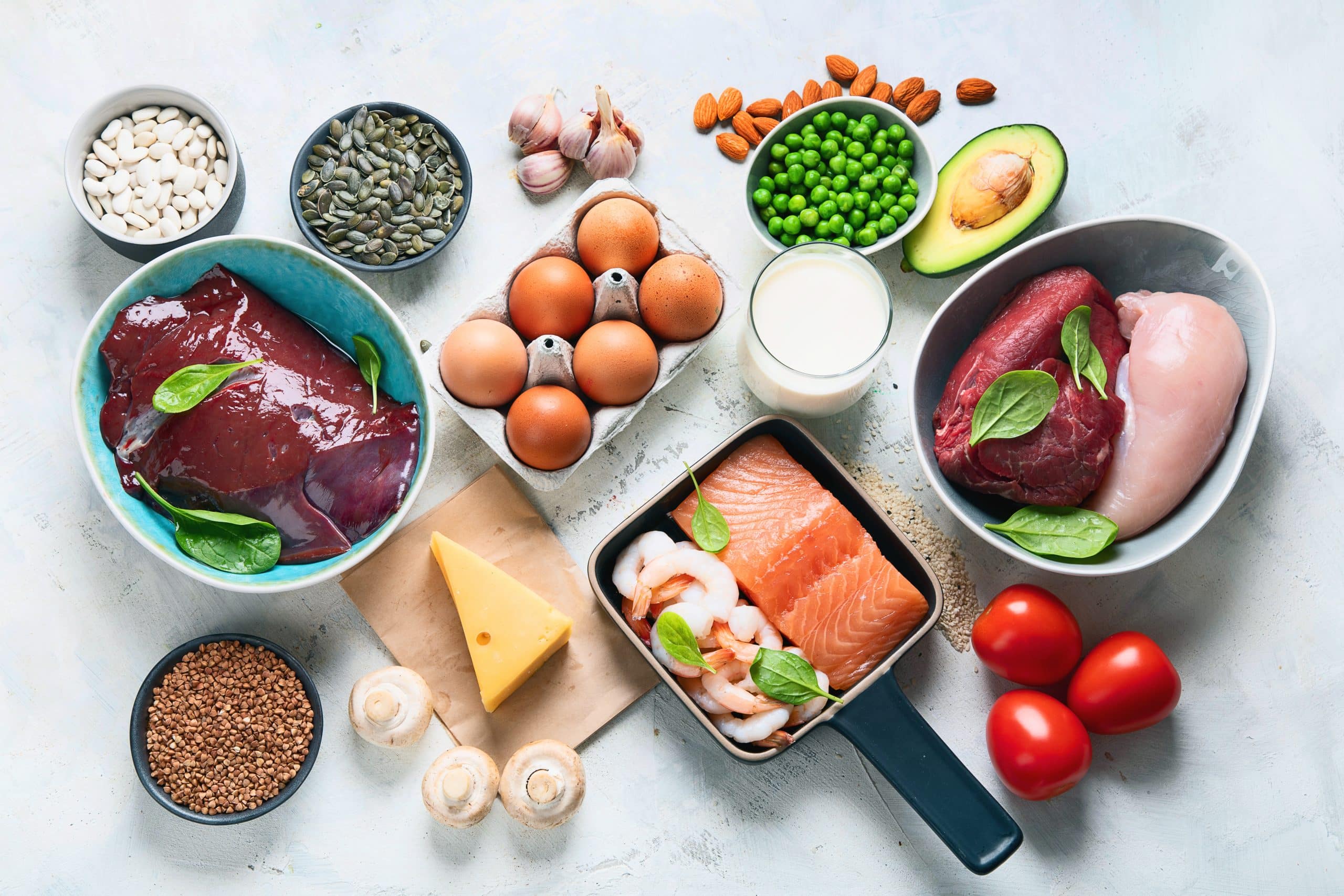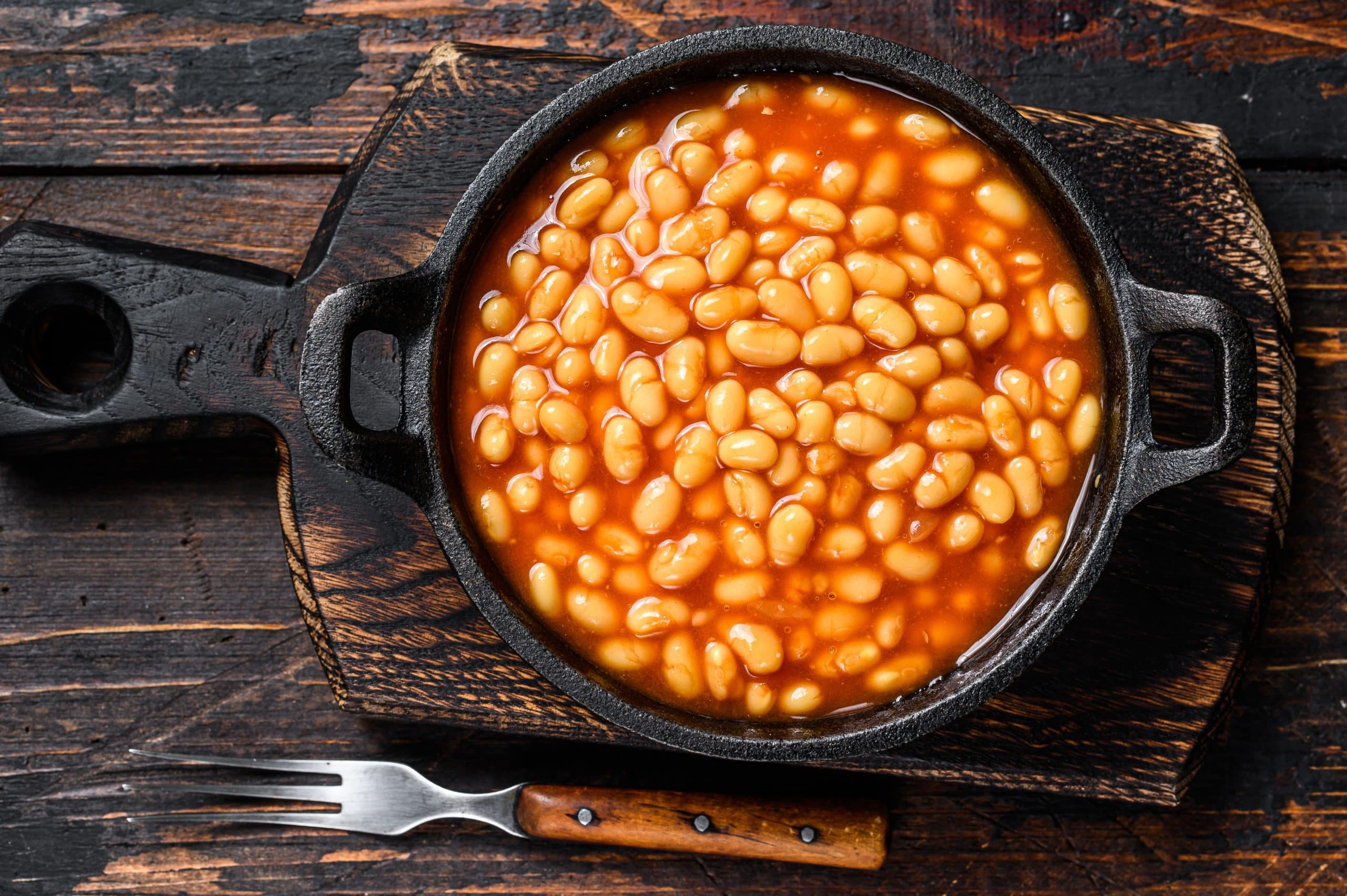When we think of Vitamin D, we automatically think of sunshine, and although that’s technically true (since our bodies produce Vitamin D when exposed to sunlight), it’s also true that many of us don’t get enough of the “sunshine vitamin.” Our bodies need Vitamin D to help with the absorption of calcium and phosphorus, which are essential for healthy bones. In fact, a Vitamin D deficiency can lead to rickets in children and osteomalacia in adults (11). But here’s the catch: if you’re a vegetarian or vegan, it becomes even harder to get enough Vitamin D. That’s because the richest sources of Vitamin D are fatty fish, such as salmon and mackerel, and eggs. So what can you do?
Get your personalized
meal plan!
For starters, knowing the best Vitamin D foods for vegetarians is a great way to ensure you get enough of the nutrient. Here’s what I recommend:
What Foods Are High In Vitamin D?
The foods that are highest in Vitamin D include some types of fish (especially salmon and tuna), cheese, egg yolks, and mushrooms. Unfortunately for vegetarians, many of these options are off-limits. So, how can you get enough Vitamin D if you don’t eat animal products?
The good news is that there are plenty of plant-based foods you can include in your diet to get the Vitamin D you need. These include:
Fortified Plant Milks
Most plant milks, such as soy and almond milk, are fortified with Vitamin D.
Fortification means that additional nutrients have been added, sometimes to replace those lost during processing, or for public health reasons. If you’re using fortified plant milks to make your morning smoothie or latte, you can rest assured that you’re getting some Vitamin D out of that.
Mushrooms And Other Fungi
It may surprise you to know that mushrooms—specifically shiitake and portobello mushrooms—can provide you with some Vitamin D (8). Most mushrooms are grown in the dark, so they’re exposed to UV light to stimulate the production of Vitamin D before being sold in stores.
But that doesn’t mean the first pack of mushrooms you see in the grocery store is your only option.
There are several other fungi that can provide you with Vitamin D, such as enokitake, maitake, and morel. As an added bonus, many of these can be found at farmers’ markets and specialty shops.
Now, the bad news is that mushrooms don’t contain a huge amount of Vitamin D (100g of cooked shiitake mushrooms contains about 28 IU, for example (3)), so you’ll probably need to supplement your dietary intake with other sources.
Read More: Vegetarian Snacks With Protein: Tasty, Healthy Options
Orange Juice And Other Fortified Drinks
Orange juice isn’t just great for breakfast—it’s also great for Vitamin D! Many brands of OJ are fortified with additional Vitamin D, so be sure to check the nutrition label before you buy. Note that some brands also fortify other juices, such as apple and grapefruit juice.
Ready-To-Eat Cereals
Cereal isn’t just for kids—it can be a great source of Vitamin D for vegetarians, too!
Many brands of ready-to-eat cereals are fortified with Vitamin D, so be sure to read the nutrition label before you buy. Hot and cold cereals are great options, and the best part is that you can easily customize them with other ingredients, such as nuts and fruits.
Margarine
It may surprise you to know that margarine can be a great source of Vitamin D, too.
Most brands are fortified with the nutrient. Be sure to check the label before you buy. For an added nutrient boost, spread your margarine on some whole wheat toast or add it to a vegetable stir-fry.
Note that many of these sources are not vegan-friendly, but that doesn’t mean there aren’t options for vegetarians. Margarine is one of those options that vegans can also use to get their vitamin D.
Egg Yolks
Vegetarians who eat eggs are in luck, because egg yolks are a great source of Vitamin D.
Just one large egg yolk contains about 37 IU of the nutrient (1). This number goes up depending on the quality of feeds given to the chickens that lay the eggs—if you can, buy organic and free-range eggs from a trusted source.
Hard Cheeses
Cheese is a great source of Vitamin D, but most soft cheeses aren’t fortified with the nutrient. Hard cheeses, on the other hand, often contain some Vitamin D—if you’re looking for a cheesy snack, go for something like cheddar or swiss.
Fontina, parmesan, and gouda also contain Vitamin D—just note that the amounts will vary depending on the type of cheese.
If you’ve mustered up the courage to crush your weight loss goal, let Betterme take the sting out of this demanding process. Our app will help you restructure your habits, remold your life and crank up your fitness results!
Supplements
If you’re not getting enough Vitamin D from your diet, then you may need to take a supplement. There are two types of Vitamin D supplements available: Vitamin D2 and Vitamin D3.
I recommend Vitamin D3 as it’s more easily absorbed by the body than the other, but both will do the job just fine.
Here are some tips for taking Vitamin D supplements to make sure you’re getting the most out of them:
- Take your supplement with a meal that contains fat, since this will help your body absorb it better.
- Consider taking a probiotic, which might help increase the absorption.
- Check with your doctor first if you are pregnant, breastfeeding, or have any pre-existing health conditions.
- Make sure you’re taking the right dosage for your needs—a typical dose is between 1000 and 4000 IU per day (7). Discuss this with your healthcare provider.
- Opt for a vegan-friendly supplement if you’re looking to avoid animal products (many vitamin D supplements contain animal products such as lanolin).
It’s also important to remember that Vitamin D is fat-soluble, so you should be careful not to take too much. Overloading on the nutrient can lead to toxicity, which may have serious consequences.
Sunshine
Food and supplements are great, but not as low-effort as getting Vitamin D from the sun! If possible, try to get out in the sunshine for at least 15-30 minutes a day. Note that sunscreen can interfere with Vitamin D absorption, so you may want to opt for a sunscreen with a lower SPF or increase your exposure time, just be careful not to burn.
Getting enough Vitamin D from the sun is dependent on several factors, according to the National Institute of Health, including your age, skin pigmentation, and where you live (5).
For instance, people in northern climates will have a harder time absorbing Vitamin D from the sun, since its rays are weaker during the winter months.
People with darker skin tones also produce less Vitamin D when exposed to the sun, since their skin is more protected from UVB rays (5).
To get the most out of the sun’s Vitamin D, be sure to expose as much skin as possible while keeping sensitive areas covered.
You need at least 5-30 minutes of exposure at times when the UVB index is 3 or higher, so be sure to check your local weather report to find out when this occurs (2). Usually, this is between 10am and 3pm.
Be warned; too much sun exposure can be dangerous, so you should always take precautions to protect yourself from skin cancer.
The American Academy of Dermatology recommends wearing a wide-brimmed hat, protective clothing (like long sleeves and pants), UV blocking sunglasses, and of course, sunscreen on a day to day (6). So don’t just go out there and bake, 30 minutes is enough.
Read More: 7-Day Vegetarian Keto Meal Plan for Weight Loss
How Much Vitamin D Do I Need?
Most nutritionists recommend that adults get 600 IU of Vitamin D per day, with older adults needing slightly more (4). This can be easily achieved with a healthy diet and moderate sun exposure, but you may need to take a supplement if you’re not able to get your daily dose from food or sunlight.
What Are The Signs That You’re Not Getting Enough?
If you’re not getting enough Vitamin D, you might experience symptoms such as fatigue, joint or muscle pain, bone pain, or increased risk of infections. Additionally, Vitamin D deficiency can lead to more serious health issues such as depression, osteomalacia, and rickets in children (9).
What are the signs that you’re getting too much? Vitamin D toxicity, or hypervitaminosis can occur if you take more than 10,000IU per day for an extended period of time (10).
Symptoms include nausea, vomiting, loss of appetite, confusion and excessive thirst or urination (10). You’re unlikely to get too much Vitamin D from food and sun, but it’s important to be careful when taking supplements.
What Does Vitamin D Do?
Vitamin D is one of the most important nutrients for a healthy body and mind, as it performs a range of functions (11):
- It supports strong bones and teeth by helping the body absorb calcium;
- It helps regulate blood pressure and cholesterol levels;
- It supports the immune system;
- It helps regulate hormones;
- It is involved in cell growth processes;
- It plays a role in glucose metabolism;
- It also plays an important role in maintaining muscle function.
Reasons why BetterMe is a safe bet: a wide range of calorie-blasting workouts, finger-licking recipes, 24/7 support, challenges that’ll keep you on your best game, and that just scratches the surface! Start using our app and watch the magic happen.
The Bottom Line
In summary, Vitamin D is essential for our overall health and well-being. For vegetarians, making small changes to your diet such as eating foods rich in Vitamin D or taking a supplement can help ensure that you’re getting enough of the nutrient.
If you’re unsure of your Vitamin D intake, consult with your doctor or nutritionist to make sure you’re getting enough.
DISCLAIMER:
This article is intended for general informational purposes only and does not serve to address individual circumstances. It is not a substitute for professional advice or help and should not be relied on for making any kind of decision-making. Any action taken as a direct or indirect result of the information in this article is entirely at your own risk and is your sole responsibility.
BetterMe, its content staff, and its medical advisors accept no responsibility for inaccuracies, errors, misstatements, inconsistencies, or omissions and specifically disclaim any liability, loss or risk, personal, professional or otherwise, which may be incurred as a consequence, directly or indirectly, of the use and/or application of any content.
You should always seek the advice of your physician or other qualified health provider with any questions you may have regarding a medical condition or your specific situation. Never disregard professional medical advice or delay seeking it because of BetterMe content. If you suspect or think you may have a medical emergency, call your doctor.
SOURCES:
- Egg, yolk, raw, fresh (2019, usda.gov)
- Estimation of exposure durations for vitamin D production and sunburn risk in Switzerland (2019, pubmed.gov)
- Mushrooms, shiitake, cooked, with salt (2019, usda.gov)
- Nutrition Recommendations in Pregnancy and Lactation (2017, nih.gov)
- Sunlight and Vitamin D (2013, nih.gov)
- Sunscreen FAQs (n.d., aad.org)
- Taking too much vitamin D can cloud its benefits and create health risks (2022, harvard.edu)
- Vitamin D (2023, harvard.edu)
- Vitamin D Deficiency (2023, nih.gov)
- Vitamin D Toxicity–A Clinical Perspective (2018, nih.gov)
- Vitamin D: The “sunshine” vitamin (2012, nih.gov)
